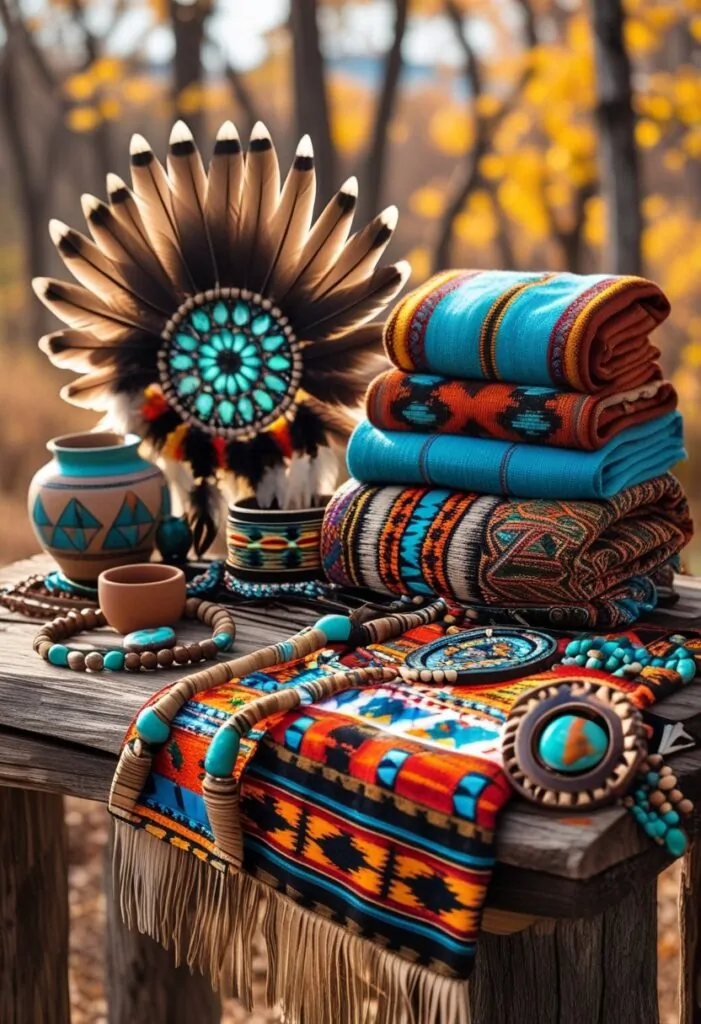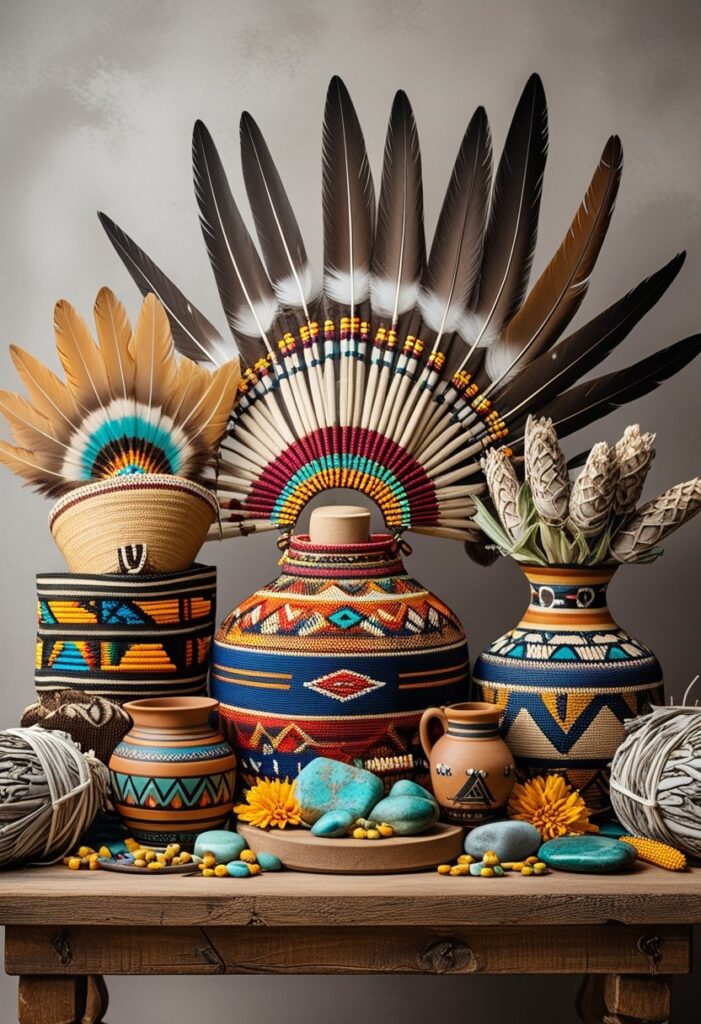Celebrating Native American Heritage Month: Honoring Culture and History
Native American Heritage Month is observed every November to honor the rich cultures, traditions, and histories of Native American and Alaska Native peoples. It recognizes their significant contributions and provides a chance for people to learn more about the diverse Native communities across the United States. This month encourages everyone to celebrate Native American heritage while addressing historical and ongoing challenges faced by Indigenous peoples.

The observance began in 1990 and has since grown into an important time for education and awareness. Various organizations and institutions join together to highlight Native languages, art, music, and stories. It also serves as a platform to promote respect and understanding toward Native American communities, both past and present.
Engaging in Native American Heritage Month can be as simple as attending cultural events, supporting Indigenous artists, or sharing stories on social media. Recognizing this month helps ensure that Native voices continue to be heard and that their traditions remain alive for future generations.
Key Takeways
- Native American Heritage Month honors the culture and history of Indigenous peoples.
- It raises awareness about the contributions and challenges of Native communities.
- Celebration includes education, cultural events, and advocacy efforts.
Origins and History of Native American Heritage Month

Native American Heritage Month grew from early efforts to recognize Native peoples’ contributions and has evolved through federal support and advocacy by key groups and individuals. It reflects decades of work to raise awareness about Native history, culture, and achievements.
Early Advocacy and American Indian Day
The movement to honor Native Americans began in 1916 when New York became the first state to declare an “American Indian Day.” This day was meant to recognize the history and contributions of Native peoples.
Various groups, including the American Indian Association, pushed for national recognition. Over time, more states joined the effort, and events grew to include cultural presentations and education.
Organizations like the Boy Scouts of America also helped by including Native American history in their programs. These early steps laid the foundation for broader recognition.
Federal Recognition and Presidential Proclamations
In 1986, President Ronald Reagan officially proclaimed the last week of November as “American Indian Week.” This was the first major federal recognition of Native American heritage.
Since 1990, November has been designated National Native American Heritage Month by the U.S. government. This choice reflects November’s traditional importance in Native cultures for harvest and community gathering.
Every year since 2009, U.S. Presidents, including George H.W. Bush, have issued proclamations supporting the month. These proclamations encourage Americans to learn about Native history and culture.
Role of Key Organizations and Figures
Key Native American figures and organizations have been vital in promoting the heritage month. Advocacy groups worked for many years to bring Native voices to the national stage.
Institutions such as the Museum of Arts and Science have hosted exhibits to educate the public. These programs highlight Native traditions, arts, and stories.
The continued work by Native advocates and allies ensures that Native American Heritage Month remains a time for education and respect. Their efforts keep Native history present in the national conversation.
Significance and Goals of Native American Heritage Month

Native American Heritage Month highlights the importance of recognizing the histories, cultures, and contributions of Indigenous people. It aims to bring attention to Native American identity, education, historical challenges, and empowerment efforts.
Honoring Native American Heritage and Identity
Native American Heritage Month celebrates the rich cultures and traditions of Native Americans and Alaska Natives. It honors their unique languages, customs, and art forms that have been passed down through generations.
This month acknowledges the distinct identities of tribal nations and the deep connection Native peoples have to their ancestral lands. It fosters respect for their ongoing cultural contributions within American society.
By highlighting diverse tribal histories, the observance helps preserve Native heritage and builds pride within Native communities. It also promotes the recognition of their role in shaping American history and culture.
Educational Initiatives and Awareness
Raising public awareness about Native American history is a key goal. Education during this month helps correct misconceptions and expands knowledge about Indigenous peoples beyond stereotypes.
Schools, museums, and organizations use this time to share facts about the origins, lifestyles, and accomplishments of Native Americans. They also highlight contemporary issues faced by tribal nations.
Programs often focus on tribal sovereignty, treaty rights, and tribal governance, helping both Native and non-Native people understand important Native issues. This approach supports long-term awareness and respect.
Addressing Historical Injustices
Native American Heritage Month brings attention to the historical injustices Native peoples have endured, including displacement, broken treaties, and cultural suppression. Acknowledging these wrongs is necessary for healing.
The month encourages discussion about past policies like forced removal and boarding schools that harmed Native communities. It recognizes Native resilience despite these challenges.
This reflection fosters a more honest understanding of American history. It also supports efforts to address ongoing inequalities in health, education, and economic opportunities experienced by many Indigenous peoples today.
Empowering First Americans and Indigenous People
The observance promotes empowerment by highlighting Native achievements in areas like leadership, arts, science, and business. It celebrates Native voices influencing modern America.
It encourages Native youth and communities to pursue opportunities while holding on to their cultural roots. Native American Heritage Month supports initiatives that strengthen tribal self-determination and economic development.
Recognition during this month helps reinforce Native Americans’ role as vital contributors to the country’s future. It also backs advocacy for tribal rights and cultural preservation.
Ways to Celebrate and Participate

Participating in Native American Heritage Month can involve a variety of meaningful activities. These focus on learning about Indigenous history, supporting Native communities, and honoring their contributions through events, art, and education.
Community Events and Cultural Activities
Many Native communities and organizations hold events during November. These include powwows, storytelling sessions, and traditional dances. Attending such gatherings helps people experience authentic Native culture firsthand. The National Congress of American Indians often collaborates with local tribes to promote these events.
Some cities host panel discussions about Indigenous rights and history. Others offer workshops on Native languages or crafts. Participating in these activities fosters respect and deeper understanding.
Supporting Native Artists and Businesses
Buying from Native artists and small businesses is a direct way to support communities. Many Native artisans sell handmade jewelry, pottery, and textiles. This support helps preserve traditional crafts and provides economic benefits.
Consumers can find Native-owned shops online or at local markets. Some tribal enterprises are listed through organizations like the Department of the Interior or the National Endowment for the Humanities. Choosing these businesses honors Indigenous entrepreneurship and culture.
Visiting Museums, Parks, and Historic Sites
Visiting places that showcase Native history or heritage adds value to the celebration. The Smithsonian, National Gallery of Art, and Library of Congress have special exhibitions during this month.
The National Park Service manages important sites like Alcatraz Island and the Trail of Tears National Historic Trail. These places tell stories of Native resilience and culture. Exploring them deepens knowledge of Indigenous contributions and challenges.
Digital Resources and Ongoing Engagement
Digital tools offer access to a wide range of Indigenous content. The Library of Congress provides online archives, including Native American photographs, documents, and oral histories.
Websites from the National Archives and various tribal councils host educational materials and virtual tours. Following Native organizations on social media also helps stay informed beyond November.
Engagement is ongoing when people use these resources to learn and share Native stories throughout the year.
Contemporary Challenges and Continued Advocacy

Native American communities face ongoing struggles in preserving their culture, asserting their rights, and protecting their lands. These challenges require focused efforts in language and tradition revitalization, political representation, and environmental care.
Revitalization of Languages and Traditions
Many Native American languages are endangered due to years of forced assimilation and limited transmission between generations. Communities and organizations actively work to revive these languages by creating language programs in schools, online courses, and cultural centers.
Cultural traditions, such as ceremonies, crafts, and storytelling, are also being preserved alongside language efforts. These help maintain identity and strengthen community ties. Support from the Department of the Interior and other agencies often provides funding for these projects.
Revitalizing language and culture is crucial because it keeps Native American heritage alive and counters historical attempts to erase it.
Sovereignty, Representation, and Policy
Native nations continue to fight for true political sovereignty, seeking the ability to govern their lands and people without outside interference. This includes managing resources, education, and justice systems within their territories.
Representation at state and federal levels remains limited. Advocacy groups push for more Native voices in government and policy-making, so laws better reflect Indigenous needs.
Federal agencies, including the Department of the Interior, play a key role in policy decisions affecting Native communities. Continued advocacy aims to improve relations and ensure respect for treaty rights and self-governance.
Land Rights and Environmental Stewardship
Land is central to Native identity and survival. Many tribes work to regain lost lands or protect sacred sites from exploitation and environmental damage. This includes opposing pipelines, mining, and deforestation projects that threaten their territories.
Native stewardship practices emphasize sustainability and respect for natural resources. Tribes collaborate with federal agencies and environmental groups to restore ecosystems and promote clean water and air.
Grant programs funded by the government support tribal-led environmental initiatives, helping to balance development with preservation of cultural landscapes.
Frequently Asked Questions
Native American Heritage Month has a clear history and specific ways people observe it. It involves government recognition and community activities. Many events focus on culture, education, and honoring Native contributions.
What are the origins of Native American Heritage Month?
Native American Heritage Month began as “American Indian Week” in 1986. It was later expanded to a full month in 1990 by President George H.W. Bush. The month is officially recognized by the federal government every November.
How can individuals participate in Native American Heritage Month?
Individuals can learn about Native histories, traditions, and cultures. They might visit museums, read Native authors, or attend talks. Recognizing whose lands they live on is also important.
What events are typically held during Native American Heritage Month?
Events often include cultural festivals, storytelling, and art exhibits. Educational workshops and discussions about Native history and challenges are common. Some communities hold ceremonies to honor traditions and tribal solidarity.






